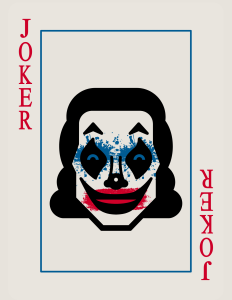The radical reimagining of an iconic comic book villain divides audiences
BY PHILLIP KIM, STAFF WRITER
Editor’s note: This article contains spoilers, discussions of mental health and mentions of sexual and physical violence.
The release of “Joker” in 2019 was a landmark moment in film history.
The psychological thriller won the prestigious Golden Lion prize at the Venice International Film Festival– a first for a comic book adaptation– and went on to become the highest-grossing R-rated movie prior to the release of Marvel Studios’ “Deadpool & Wolverine.” After such overwhelming critical and commercial success, many considered a sequel inevitable.
When the long-awaited “Joker: Folie à Deux” arrived in theaters, it was met with harsh criticism. Fans and critics alike have labeled it an insult to the first film and previous iterations of the titular villain. “It’s almost as if they made an active effort to ruin everything that made the first one great,” one IMDB.com user wrote.
Is it really?
“Joker Folie à Deux” opens with a disturbing sequence in which prison guards brutally mistreat a visibly weak and dispirited Arthur Fleck (Joaquin Phoenix). Subsequently, the jester-turned-murderer encounters two women: his attorney Maryanne Stewart (Catherine Keener), who advises him to repress the murderer inside him, and a self-claimed fan, named Harleen Quinzel (Lady Gaga) who encourages Fleck to do the opposite.
Fleck’s fragile state may surprise those who expected him to have evolved into a criminal mastermind after the events of the previous motion picture. However, “Joker” never explicitly suggested such a future awaited its protagonist.
At first, the depressed criminal’s fear of capital punishment forces him to follow his counsel’s recommendations to claim insanity. Then, assured by Quinzel that the public will love and admire Joker, Fleck fires Stewart and fully embodies the new persona. Citizens erupt in thunderous applause, welcoming back their mascot.
Director Todd Phillips continues to show deep empathy for society’s outcasts. He portrays Fleck’s yearning to be understood and embraced, causing his vulnerability to Quinzel’s manipulations. Through promises of affection and sexual pleasure, Quinzel pulls Fleck further into the depths of madness.
The performance quickly comes to an end when Joker is confronted with the reality that he was not a hero nor an antihero. Former co-worker Gary Puddles (Leigh Gill) testifies in court he always considered Fleck a friend but was traumatized after witnessing his crime. The failed comedian is shaken, then returns to prison to be physically and sexually assaulted by his jailers.
Fleck could no longer claim he had no choice but to turn to evil. He could no longer argue that his actions were merely retaliations against the bullies. He was just a common criminal driven by self-pity and self-loathing. Any remaining delusion of superiority is shattered when the great Joker finds himself helpless against simple violence by ignorant warders.
As the film comes to a close, Fleck once again stands in the courtroom and takes responsibility for all his murders. “Joker was a made-up character,” he says. “I am just me.” All the fans, including Quinzel, quickly dissipate. They cared about the revolutionary, not the actual man behind the illusion.
In this moment, the sorrowful comic is making one last call for redemption. He is not the leader of a movement rallying for support, but a broken man crying for help. Society denies him this final wish.
“Joker: Folie à Deux” is painfully honest. If one were to ask what the most realistic course of events to follow the ending of “Joker” is, the answer wouldn’t deviate much from what unfolds in this film. Phillips could have easily abandoned the realism for a more conventional action adventure storyline but chose instead to honor the spirit of the first movie. He continued to scrutinize how cruel society can be to people like Fleck to the very end.
The filmmaker also honors previous iterations of the character by eliminating any possible ties between them and Fleck. He clearly understands that Joker, such as one from “The Dark Knight,” must not have a defined backstory nor a known origin. Fleck is a completely separate character, merely inspired by the comic book villain.
Most importantly, “Joker: Folie à Deux” serves as a warning. It shows why violence cannot be the way out for those struggling with pain and misery. It asks viewers to look around and take care of each other, as that may be all it takes to prevent someone from becoming the next Fleck.
“Joker: Folie à Deux” is a divisive film that makes little effort to entertain. What it does offer is a thorough psychological portrayal of loneliness and self-destruction. It is a scathing critique of society’s lack of genuine concern for its members and a plea for change. This is not a film for everyone, but for many, it will strike a deeply resonant chord.



